What comes next for RI’s disappearing quahogs? The future is uncertain
Editor's note: This is the conclusion of a three-part series on the decline of Rhode Island's quahog.
WARWICK – While he scratches fruitlessly for quahogs under a gray sky, David Ghigliotty looks forward to what will surely be a brighter day.
The state Department of Environmental Management is planning to allow shellfishermen back into the lower Providence River for one of the few mornings a year they’re free to work beds that are the most productive in Narragansett Bay.
The area between Bullock Point in East Providence and Gaspee Point in Warwick reopened in 2021 after being closed for 75 years because of pollution. Close to the sewage treatment plants that empty into the Pawtuxet River and other parts of the upper Bay, the waters are rich with nutrients and the quahogs are thriving.
Ghigliotty can’t wait to get back into those beds.
“The clams there are beautiful,” he says.
More: Giant RI sewer project is cleaning Narragansett Bay. But is it too costly for ratepayers?
He was there in his skiff for opening day three years ago, one among more than 150 boats crowded together in a scene reminiscent of what the Bay would have looked like in the 1980s.
The waters didn’t disappoint. Rakers brought in more than 2,000 clams apiece in just the few hours before the 11 a.m. cutoff enforced by environmental police. Most were littlenecks, the smaller quahogs with more tender meat that have higher value than larger topnecks, cherrystones or chowders.
In just 15 mornings in 2021, the 1,900 acres in what’s been classified as Area E yielded about 35% of the total number of quahogs harvested from the Bay for the entire year. From 28 days in 2022, the area produced an astounding 60% of the annual catch.
As quahog harvests have dropped off in other areas of the Bay, it’s no exaggeration to say the reopening of the lower Providence River is propping up the state’s shellfishing industry.
“The golden goose now is up in Area E in the Providence River,” said quahogger James Boyd, a member of the legislative commission studying the decline in harvests. “That, if anything, is some little sliver of salvation.”
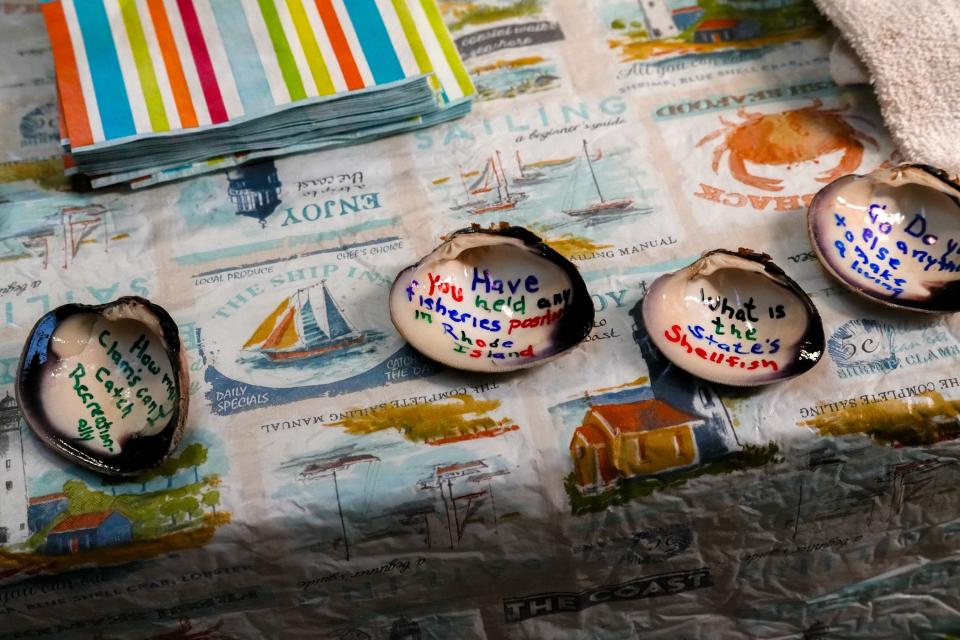
Heavy rains a threat to harvesting
Around the same time authorities were working to rein in nitrogen releases by wastewater treatment plants, they were also moving forward with a huge public-works project to take care of the other major source of pollution in the Bay: untreated overflows of sewage and stormwater caused by heavy rains.
Like those in other historic areas, the oldest sewer system in the Greater Providence area combines waste from homes and businesses with runoff from streets, roofs and sidewalks. It’s an antiquated design that can easily become overwhelmed, discharging untreated effluent carrying bacteria, oil, heavy metals and other contaminants into the Bay.
Ordered by the DEM to comply with the federal Clean Water Act, the Narragansett Bay Commission, which owns the system – the largest in Rhode Island – embarked on a decades-long, $1.7 billion plan to collect combined sewer overflows in massive underground storage tunnels until it can be pumped to treatment plants on drier days.
The first two phases, which included construction of a 3-mile tunnel under Providence, wrapped up a decade ago. The centerpiece of the final phase, a 2.2-mile tunnel under Pawtucket, was completed in February and is expected to go into service in 2026.
As more pieces of the project have gone into operation, the water in the Bay has gotten cleaner.
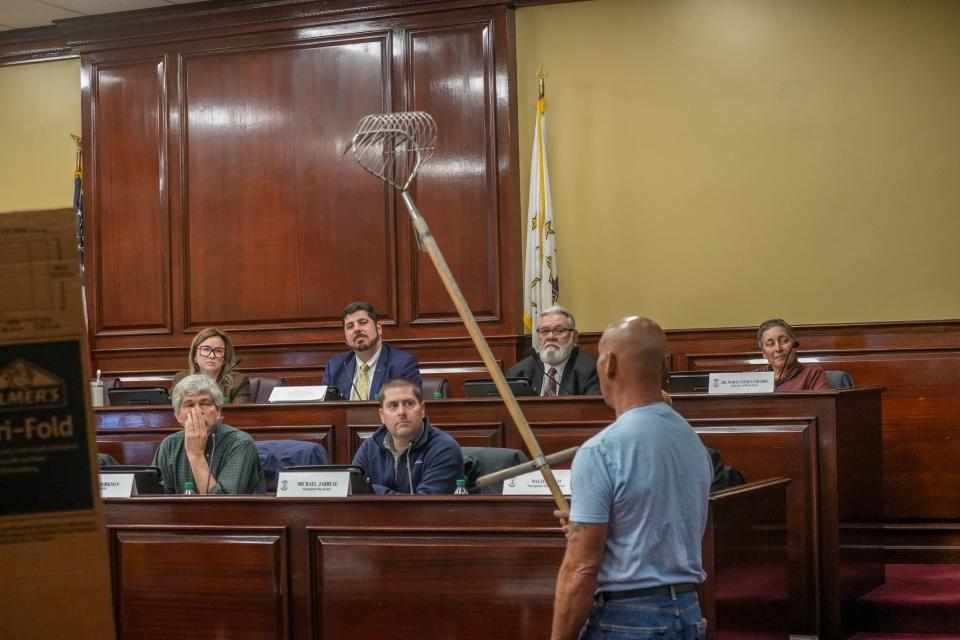
The DEM manages shellfishing areas based on water quality. Some waters are permanently closed. Others close conditionally, depending on location and rainfall.
The agency has gradually lifted shellfishing restrictions, opening more areas over more days going north toward the state’s urban core.
In 2011, it first started relaxing shellfishing rules, but the bigger changes came six years later when it removed the rainfall-based restrictions on about half of the upper Bay and relaxed the restrictions on the other half. Swaths of the Bay that were once off-limits when heavy rains drove tainted waters out of outfalls were now unaffected.
The opening of Area E signaled the biggest development yet. The percentage of acre-days open for shellfishing – a measurement that accounts for time and area – climbed from 49% in 2000 to 89% in 2022.
Generally speaking, quahog landings increase higher up the Bay. The waters between Warwick to the west and Barrington, Warren and Bristol to the east are the sweet spot. After reopening to shellfishing in the '80s, Barrington Beach was the cash cow for the industry. Now, it’s the lower Providence River.
But there’s a tradeoff. The river is still extremely sensitive to impairments from stormwater runoff. Despite construction of the storage tunnel in Providence, combined sewer overflows still occur with regularity. And climate change is dialing up the frequency of heavy rainstorms.
Concerned about the sustainability of Area E, regulators cut back the number of days quahoggers were allowed there last year. The reduced cap, combined with lots of rainfall – 2023 ranked among the highest on record for downpours in Rhode Island – meant that shellfishermen were allowed to work Area E on only 16 mornings. The number of clams taken from its beds was about half what it was in 2022, according to preliminary data from the DEM.
Final harvest data for 2023 won't be released until the summer, but bullraker Mark Johnson expects the overall figures for the fishery to be bad.
"With the number of days that have been cut back in Area E, this will probably be the worst year on record for harvests," he said.
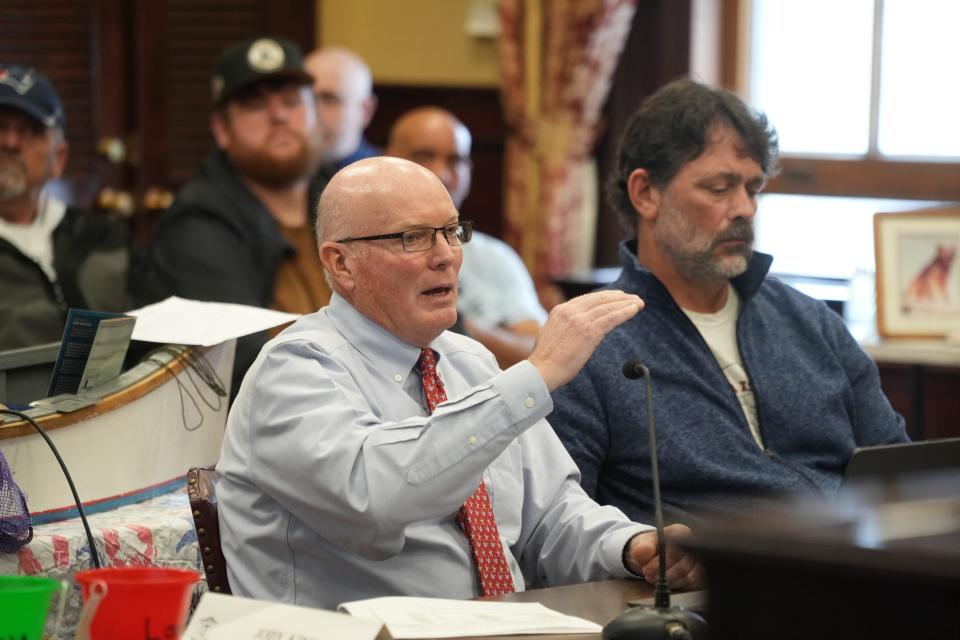
Quahog fishery is still a force in Rhode Island
Quahogging has gone through downturns before, such as the rock-bottom harvests of the early 1970s and mid-'90s, and bounced back.
The industry has confronted challenges and found solutions. After tongers complained that dredge boats were threatening the sustainability of the fishery, dredges were banned in 1956. Heated battles that raged in the '80s between rakers and divers were resolved after the two sides learned to live with each other. And in 2001, in response to concerns about overfishing, the DEM capped the number of commercial licenses available.
Despite the current slump, quahogging is still a force in Rhode Island. It was the fifth-largest fishery in the state in both 2021 and 2022, with landings of $4 million and $4.7 million, respectively.
But the future is uncertain. About half of all commercial license-holders are in their 60s, 70s or 80s, more than twice the number who are in their 20s or 30s. Of the 56 who were born in 1990 or later, only 11 fished at least 45 days in 2022, according to the DEM. Only 37 of any age went out more than 102 days.
"At this point in my career, only the strongest will survive," said Jody King, a Warwick quahogger who sits on the commission.
The reopening of the lower Providence River may not be the panacea it appears to be. Some in the industry are already questioning whether the area, which is believed to produce larvae that spread throughout the Bay, is being overharvested, which could threaten the long-term viability of the quahog population.
An increase in numbers of whelk, which prey on quahogs, could be having an effect, too. And acidification caused by absorption of more and more carbon dioxide by ocean waters could also be interfering with shell development.
Shellfishermen don’t deny that climate change and other factors could be affecting quahog numbers, but they say the nitrogen reductions are the primary reason for the recent declines.
And there is correlation. The worst quahog harvest year on record so far was 2006, which may have been partly due to the low number of licenses issued that year. But it also followed the initial round of nitrogen cuts and coincided with a precipitous drop in phytoplankton production. Production has bumped up since then, but it's still about a third lower than it was before the policy change.
The 'Goldilocks decision' on managing nitrogen levels
“There may be more than one cause of the failing shellfish industry, but nitrogen reduction is the one thing that can be easily addressed and is directly connected to phytoplankton production in the Bay,” Johnson wrote to the commission.
When policymakers decided on the 50% reduction, there was debate over the right amount to cut. Would it be too little and fail to improve oxygen levels in the Bay? Would it be too much and harm the marine food web? University of Rhode Island oceanographer Candace Oviatt has called it the "Goldilocks decision."
She's proposed strategically releasing more nitrogen from treatment plants in the winter to juice food supplies for the spring quahog spawning season, but the jury is still out on whether to take such a drastic step. An application Oviatt submitted last year for a grant to study the idea was turned down.
The Rhode Island Shellfisherman's Association says Oviatt's idea offers at least a partial solution, and its members want the DEM to adjust the nitrogen rules starting as soon as this fall.
"We can't wait as the industry continues to decline," said Boyd, a member of its board.
Rep. Joseph Solomon, the Warwick Democrat who co-chairs the commission, said he's open to the idea but wants to hear the thoughts of other members when they start discussing recommendations next month in preparation to have a final report ready before the end of the legislative session.
"I always worry about unintended consequences, though in this case I don’t think it will be harmful to the environment," he said.
Sen. Alana DiMario, the other co-chair, said she hasn't made up her mind about the proposal, acknowledging the concerns of treatment plant operators who say that interfering with the biological processes to remove nitrogen would be difficult.
"We need to really do a thorough assessment of the potential benefits and potential costs of any action we would take," the North Kingstown Democrat said. "Is there enough evidence?"
Balancing many interests in health of Narragansett Bay
There’s another possible reason quahogs are faring worse since water quality started improving.
They tend to do better than other organisms when oxygen is at a premium. In anoxic conditions that kill fish, quahogs do just fine. They literally "clam up," lowering their metabolism and pausing feeding until oxygen levels rise again.
Now that overall conditions in the Bay have gotten better, there may be more competition for food. There could also be more predators in the water. It could help explain why the quahogs in Area E, where oxygen levels are lower, are still doing well.
“There are multiple users of the Bay,” said commission member Michael Jarbeau, Narragansett Baykeeper with Save The Bay. “What’s good for one may not be good for all.”
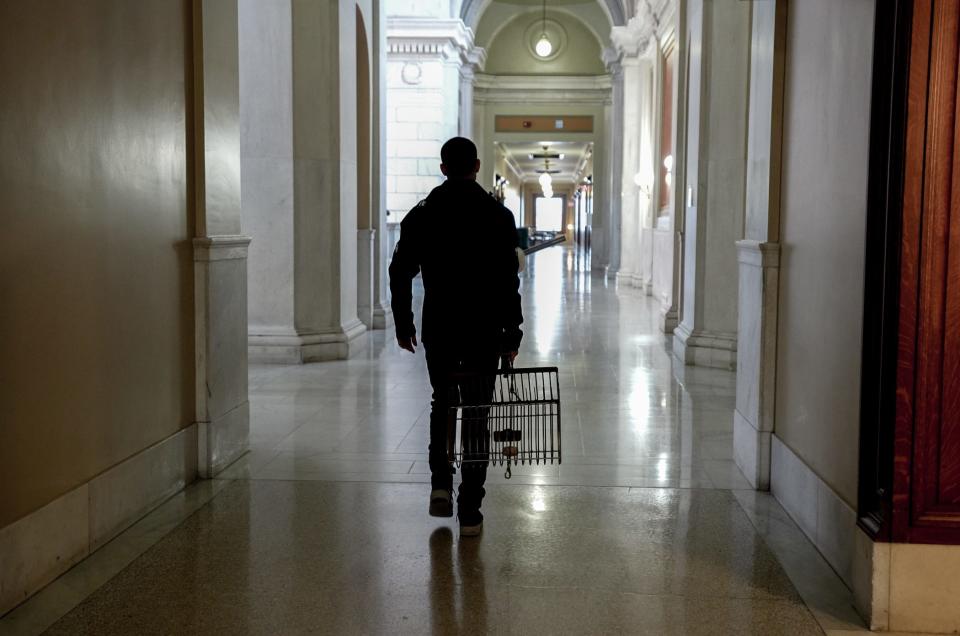
He points to the Clean Water Act, which requires that waters not only be fishable but also swimmable. As to the latter, there have been big improvements, but there's still a long way to go in the upper parts of the estuary.
"I’d say overall, the ability for Rhode Islanders and visitors to use Narragansett Bay and enjoy a healthy water body has increased a lot," Jarbeau said. "We need to look at what’s best for Narragansett Bay as a whole."
Save The Bay would not support a change to the nitrogen rules, he said. Because of the possibility of reducing oxygen levels in the winter and other risks, neither would the DEM, said Joseph Haberek, administrator of surface-water protection.
So what else could be done to boost the quahog fishery? DiMario is encouraged by the impact of a program to transplant quahogs from contaminated waters to areas where shellfishing is allowed. The quahogs flush contaminants out of their bodies within a couple of weeks, making them safe to eat and adding to the numbers that shellfishermen can harvest. She talked about using state money to expand the reseeding effort.
Solomon said he wants scientists to double down on research into the decline of the fishery. That could include testing the effects of different nitrogen levels on quahogs in special tanks at URI that can mimic Bay conditions, said Conor McManus, chief of the DEM’s Division of Marine Fisheries. He has also called for better long-term monitoring of quahog populations in the Bay.
“We’ve done a really good job, I would say, compared to other states, in continuing to define and build research on quahogs,” he said to the commission. “But we’ve just hit the tip of the iceberg, and there’s a lot more we need to uncover and think about.”
A love of the water
On this chilly morning, Ghigliotty is striking out everywhere he digs for quahogs.
He motors his skiff from Conimicut Point to Ohio Ledge, an underwater formation on the opposite side of the Bay, off Colt State Park in Bristol. Things are even worse there. Adding insult to injury, his rake gets tangled in the line from someone’s conch trap.
He decides to check out the waters off Barrington Beach, but the outgoing tide has picked up and it throws off his drift, pushing his boat back too fast and pulling hard on his rake.
Ghigliotty calls it a day after three hours on the water. With visitors on his boat, he wasn’t working as hard as usual, but his catch of only a couple of buckets full of clams is depressingly low.
The job is getting harder as he grows older. It's not like Ghigliotty doesn’t have options. During one lean period, he got his real estate license. He’s also an expert in martial arts. He has a school in Warwick and travels around the country teaching self-defense.
Nevertheless, he’s rehabbing another boat that he plans to get into the water next year. Maybe he’ll do this for another decade. It’s hard to let go. He’s known guys who keep raking into their 80s.
“They say quahoggers don’t retire. They expire,” Ghigliotty says.
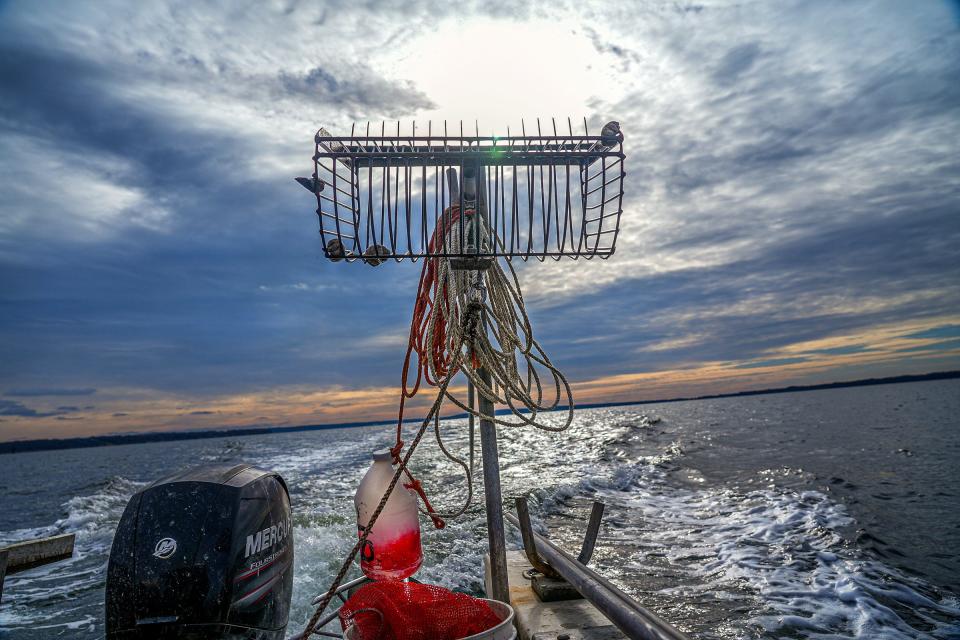
One moment earlier in the morning, as he works in silence, lifting and pulling the rake across the bottom, the sun finally breaks through the bank of clouds that shrouds the sky.
He turns around to look south and take in the glittering view across the full expanse of Narragansett Bay and beyond, the islands, the bridges, the vast ocean somewhere off in the distance.
“This," Ghigliotty says, "is what keeps me coming back."
This article originally appeared on The Providence Journal: Quahogs in RI and the industry they support face an uncertain future

